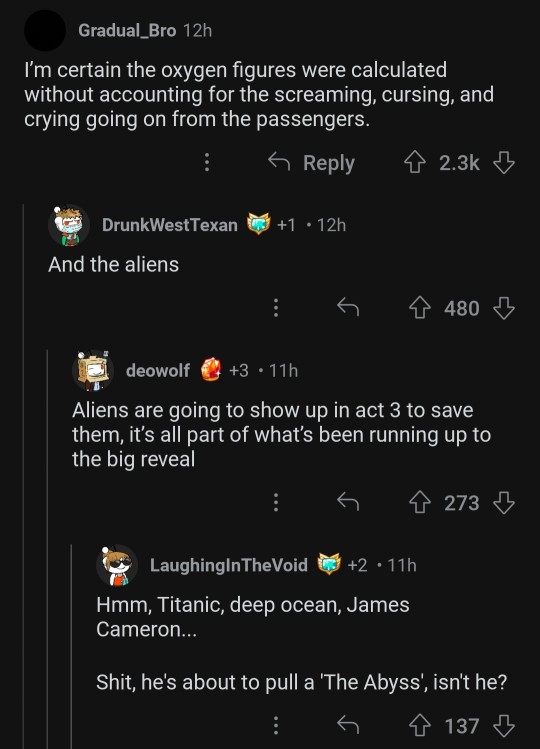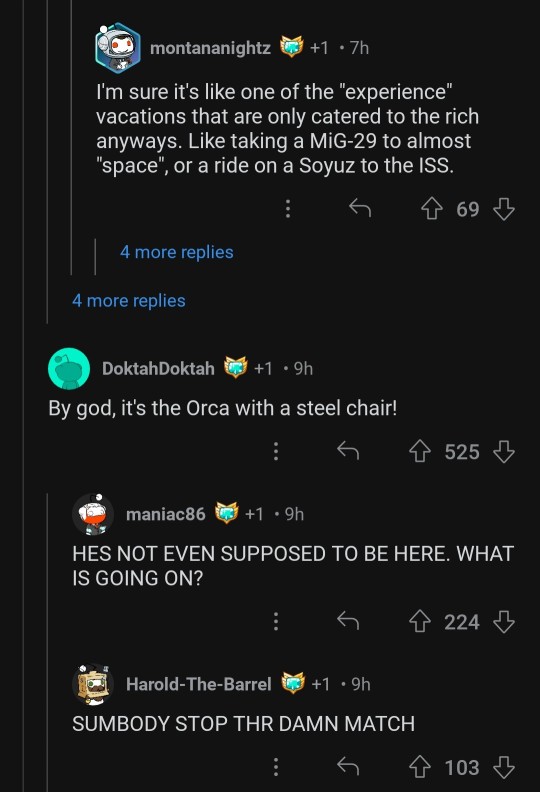#Orcas
Text

63K notes
·
View notes
Text
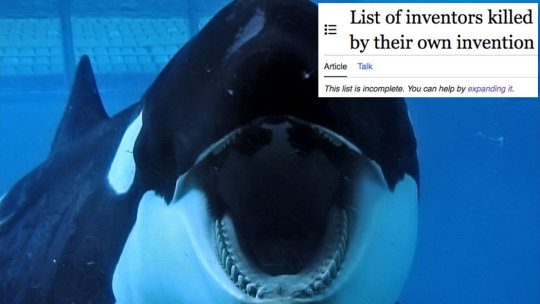
Wikipedia editors are counting down the minutes until the air runs out and they can add Stockton Rush to that list
12K notes
·
View notes
Text
Orcas breeching in close proximity to a colony of seals, Commencement Bay, Tacoma: Arguably, the orcas are trying to draw onlookers closer which drive the seals into the water. Source
4K notes
·
View notes
Text
Learning anything about marine mammal training will make you re-evaluate so much of your relationship with your own pets. There is so much force involved in the way we handle domestic animals. Most of it isn’t even intentional, it just stems from impatience. I’m guilty of it myself!
But with the exception of certain veterinary settings where the animal’s health is the immediate priority, why is it so important to us that animals do exactly what we want exactly when we want it? Why do we have to invent all these tools and contraptions to force them to behave?
When a whale swam away from a session, that was that. The trainer just waited for them to decide to come back. If they flat out refused to participate in behaviors, they still got their allotment of fish. Nothing bad happened. Not even when 20-30 people were assembled for a procedure, and the whale chose not to enter the medical pool. No big deal. Their choice and comfort were prioritized over human convenience.
It’s almost shocking to return to domestic animal medicine afterwards and watch owners use shock collars and chokers and whips to control their animals. It’s no wonder that positive reinforcement was pioneered by marine mammal trainers. When you literally can’t force an animal to do what you want, it changes your entire perspective.
I want to see that mindset extended to our domestic animals.
#‘oh I can walk my dog off-leash down a crowded street’ why does that matter?????#the horse world is ESPECIALLY bad about this too#edit: the whips is referring to horses I have not seen anyone whip their dog#pets#horses#animal training#dog training#dolphin training#dolphins#belugas#orcas#killer whales#cetaceans#marine mammals#zoos#aquariums#cooperative care#vet med#vetblr
1K notes
·
View notes
Text
I can't do a more deep opinion on this orca thing because yeah one can say "go orcas!", it feels good, doesn't it?...
but in fact those must be very scattered cases that won't change the fact that the current situation is that ocean transport is noisy, it's everywhere, and it must be driving these very, very sensitive animals crazy. Before motors, a whale could listen to what was happening in South Africa from the Argentine coast. Now their range of communication must have dropped to only a few kilometers: moreover, all the noise must be insane. There have been studies saying that even things like lawnmowers can make permanent ear damage to small rodents, and birds have had to adapt to city noises (their songs changed to a more "natural" pattern during the pandemic lockdowns) So I can't imagine what such things must be doing to the minds of orcas, one of the animals with the most complex and intelligent behavior registered outside of primates, and extremely sensitive to sound. Can we even understand what they're going through right now.
And this is not to mention the widespread whale (baleen whales, not orcas) hunting that decimated their populations to an absurd degree. All the world is currently going through a beyond worrying trend of defaunation, but whales were particulary hurt. There were 250.000 (estimated) blue whales before whaling, and they were decimated to less than 2000. Even today, with strict conservation measures, there's around 10-25k blue whales, and that's one species. Let that sink in.
Is there a solution to this, besides returning to the age of sail and banning ocean explotation? I don't know, there might be. I hope there is.
When I read about orcas, about their behavior, about their pods with their own almost cultural quirks and even dialects, so much we don't know about them, I only remember Arthur C. Clarke, when he spoke about blue whales: “We do not know the true nature of the entities we are destroying”
#cosas mias#orcas#again to have a true opinion I need to research#these are just my raw feelings on the matter
4K notes
·
View notes
Text

Grampuses by Louis A. Sargent. From Wild Beasts of the World, Vol. Two. Written by Frank Finn, published in 1909.
Internet Archive
960 notes
·
View notes
Text

#gay solidarity#gay#bisexual solidarity#bisexual#trans solidarity#trans#transgender#wild orcas#southern resident orcas#orca splatoon#orcas island#orcas#orca whale#idate orca#orca#161#1312#eat the rich#class war#classwar#antifascist#antifaschistische aktion#antifascismo#antifaschismus#antiauthoritarian#antinazi#antinationalist#anti capitalism#anticapitalista#anti capitalist love notes
2K notes
·
View notes
Text
Oh hell yes.
3K notes
·
View notes
Text

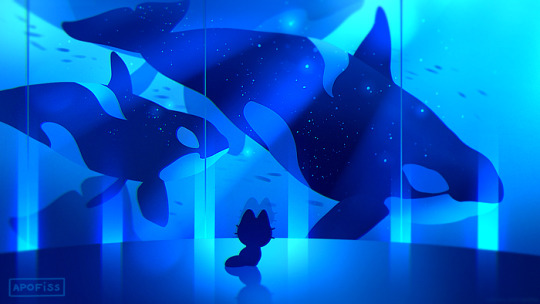
Orcas! 🌊💙 Arts from last month ^_^ Wallpaper size still available on Patreon! https://www.patreon.com/apofiss
2K notes
·
View notes
Text
In the "Unclear On The Concept" dep't... (eyeroll)
950 notes
·
View notes
Text

🚨 A team of scientists, led by Phil Morin of NOAA, have published a new paper formally proposing two “new” species of killer whale: Bigg’s killer whales (Orcinus rectipinna) and resident killer whales (Orcinus ater).🚨
More than fifty years ago, researchers began studying the killer whales found off the west coast of North America. One keen-eyed scientist, Dr. Michael Bigg, noticed that there appeared to be two kinds of killer whales: a smaller, more gregarious form that fed on fish and a larger, stealthier type that fed on marine mammals. He and his colleagues dubbed the fish-eaters “resident” killer whales and the mammal-eaters “transient” killer whales (who were later renamed Bigg’s killer whales in his honor).
Two female Bigg’s killer whales in Washington (top) and a male and female resident killer whale in Alaska (bottom)
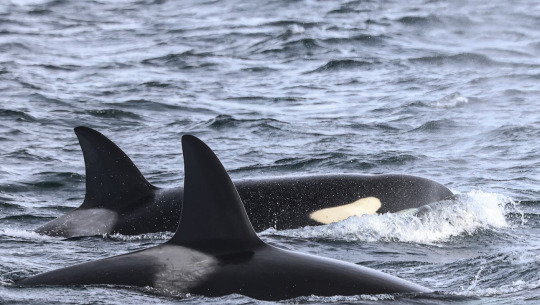

Many decades later, scientists have been hard at work trying to resolve whether or not these two forms are different species. It is not an easy task. This requires a thorough investigation into many factors, including evolutionary history, genetics, morphology, ecology, and behavior. In this paper, the researchers lay out all of the evidence and conclude that these two forms warrant elevation to species status.
As newly proposed species, both need new scientific names. There have been numerous killer whale species proposed and described in the past by other naturalists and researchers, including those in the North Pacific. Unfortunately, there are no type specimens— individual specimens upon which the first descriptions of a species are based—available for killer whales previously described from the North Pacific, so the researchers were left to examine drawings and illustrations of killer whales in the North Pacific in the late 1800s by Scammon and Cope.
The authors propose “Orcinus rectipinnus” for Bigg’s killer whales and “Orcinus ater” for resident killer whales. “Rectipinnus” presumably refers to tall dorsal fins, and “ater” means “black” or “dark” in Latin. Of note is the fact that a female killer whale from California originally examined and described by Scammon as “Orcinus rectipinnus” had seals in her stomach, suggesting she was a Bigg’s killer whale.
In addition, the authors note they are consulting with Indigenous tribes for a new common name for resident killer whales.
What’s next? In marine mammal biology, proposed taxonomic changes are reviewed by the Society for Marine Mammalogy’s taxonomy committee. If accepted, these species revisions become “official.” This has been an eagerly awaited paper by many in the field of killer whale biology and it is a great accomplishment, made possible by decades of research by scientists around the world.
A big thank you to lead author Phil Morin for letting me preview the manuscript and for answering my numerous questions in preparation for this post!
Read the paper here!
#killer whale#orca#science communication#marine biology#marine mammal#cetaceans#marine mammals#orcas#whales
535 notes
·
View notes
Text

2K notes
·
View notes
Text
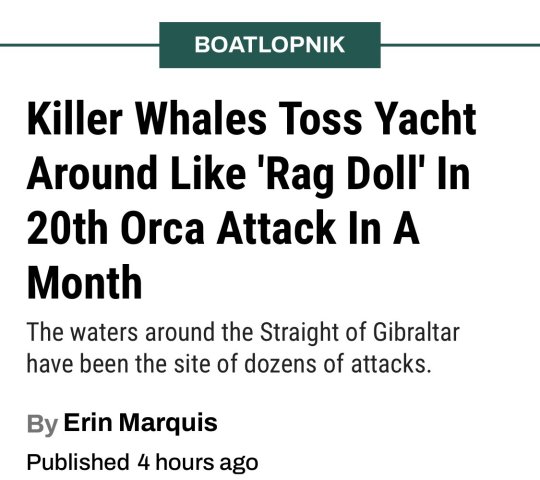
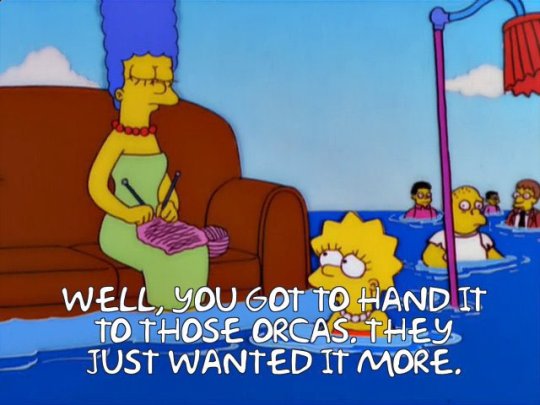
2K notes
·
View notes
Text
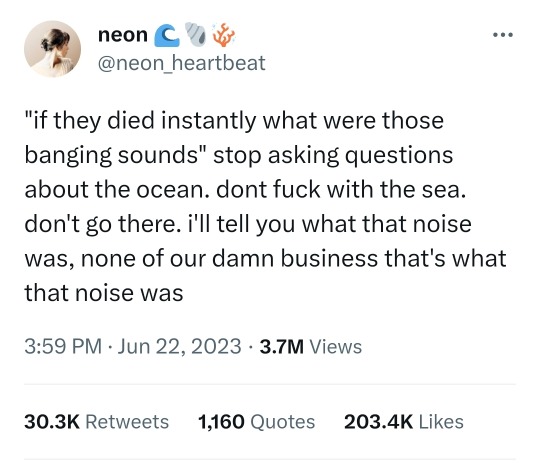
2K notes
·
View notes






